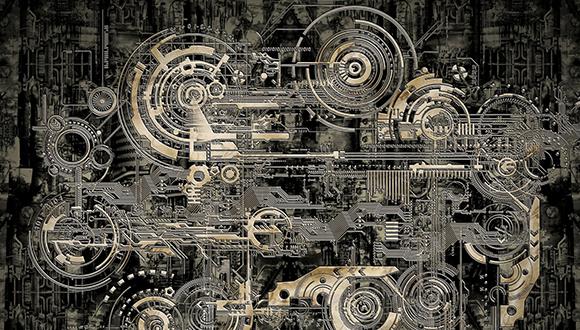סמינר מחלקה של אינגה אנדראה איריס שפר - הסרת מיקרו מזהמים על ידי ממברנות תגובתיות ננו-נקבוביות
School of Mechanical Engineering Seminar
Monday, December 26, 2022 at 14:00
Wolfson Building of Mechanical Engineering, Room 206
Micropollutant removal by nanoporous reactive membranes
Prof Dr-Ing Andrea Iris Schäfer
membrane material and processes research for water treatment
Micropollutants are typically persistent organic chemicals that are toxicologically active at very low concentrations (nano- and micro grams per litre), posing a risk to both environmental and human health. Steroid hormones are endocrine disrupters and micropollutants that reach the aquatic environment mostly from wastewater discharge. Nanofiltration is known for incomplete removal (breakthrough), requires high operating pressure (thus energy) for effective removal, and retained micropollutants accumulate concentrate streams. ‘Reactive’ membranes, such as photocatalytic membranes; are an alternative that addresses such shortcomings. Photocatalyst materials can be immobilized in micro- and ultrafiltration membrane pores (1-200 nm), where reactions occur, and at the same time water permeability is high. Micropollutants are degraded in situ within the short, order of seconds, residence times.
Mechanisms of nanopores of different mechanisms, namely stericexclusion, adsorption and photocatalytic reaction are provided. Current progress of steroid hormone degradation in a flow-through photocatalytic membrane reactor is presented at one material example. The membranes used were a polyethersulfone–titanium dioxide (PES-TiO2) membrane produced by collaborators at IOM Leipzig [1, 2]. The TiO2 nanoparticles (10 nm) were immobilised in the nanopores (220 nm) of the membrane polymers (PES and PVDF). Water quality and operational parameters, including organic matter concentration, were evaluated to determine which processes limit the degradation of steroid hormones. Steroid hormone concentrations ranged from low environmentally relevant concentrations 50 ng/L to near the solubility limit of 1 mg/L. Other examples at IAMT are organic PVDF membrane with a porphyrin photosensitiser [3, 4]. These results are not presented.
It is anticipated that flow-through the photocatalytic membrane increases the ‘contact’, and hence the probability to react, between micropollutants and reactive oxygen species in the pores. The result is high removal (80-95%), despite very short hydraulic residence times. Indeed, relatively simple materials can achieve a very high removal of micropollutants. Further enhancement can be achieved through potentially smaller pores (nanoconfinement), modified photocatalytic materials and longer residence times. When comparing data, reactive membranes are operated at nanofiltration range fluxes with pressures typical for micro- and ultrafiltration yield significant savings in energy. The ambitious water quality guideline (steroid hormone E2 1 ng/L for drinking water) are reachable.
Relevant publications for data in this presentation
[1] K. Fischer, R. Gläser, A. Schulze, Nanoneedle and nanotubular titanium dioxide–PES mixed matrix membrane for photocatalysis, Applied Catalysis B: Environmental, 160 (2014) 456-464.
[2] S. Lotfi, K. Fischer, A. Schulze, A.I. Schäfer, Photocatalytic degradation of steroid hormone micropollutants by TiO2-coated polyethersulfone membranes in a continuous flow-through process, Nature Nanotechnology, 17 (2022) 417–423.
[3] R. Lyubimenko, O.I.G. Cardenas, A. Turshatov, B.S. Richards, A.I. Schäfer, Photodegradation of steroid-hormone micropollutants in a flow-through membrane reactor coated with Pd (II)-porphyrin, Applied Catalysis B: Environmental, 291 (2021) 120097.
[4] R. Lyubimenko, B.S. Richards, A.I. Schäfer, A. Turshatov, Noble-metal-free photosensitizers for continuous-flow photochemical oxidation of steroid hormone micropollutants under sunlight, Journal of Membrane Science, 642 (2022) 119981.
Short Bio
Andrea Schäfer is Professor of Water Process Engineering, Faculty of Chemical and Process Engineering and (founding) Director of the Institute for Advanced Membrane Technology (IAMT) at the Karlsruhe Institute of Technology (KIT).
Previously she was Professor at the Nelson Mandela African Institute of Science and Technology in Tanzania, East Africa. 2006 to 2013 she was the Chair of Environmental Engineering at the University of Edinburgh, Scotland, UK following 3 years as a senior lecturer at the University of Wollongong, Australia and 3 years as postdoc & lecturer at the University of New South Wales, Sydney Australia. She holds four engineering degrees from three countries (Germany, France (2) & Australia) including a PhD from the UNESCO Center for Membrane Science and Technology at the University of New South Wales in Chemical engineering and has worked in many countries.
Passionate about membrane process engineering she has experience with several membrane processes encompassing predominantly water treatment, desalination, water recycling, remote water supplies and international development. Her work spans from fundamental research, nanomembrane materials through to commercialization projects, from water chemistry and engineering to socio-economic issues relevant to water.
Prof Schäfer has published extensively in high impact journals and authored or edited several books, including ‘Nanofiltration: Principles, Applications and New Materials’. She collaborates extensively with colleagues in many leading academic institutions worldwide and works towards her long term vision ‘I have a dream: safe water for all children’.
https://tau-ac-il.zoom.us/j/4962025174?pwd=bVJUeElXRUUya3BERisyNllLOE9EZz09


